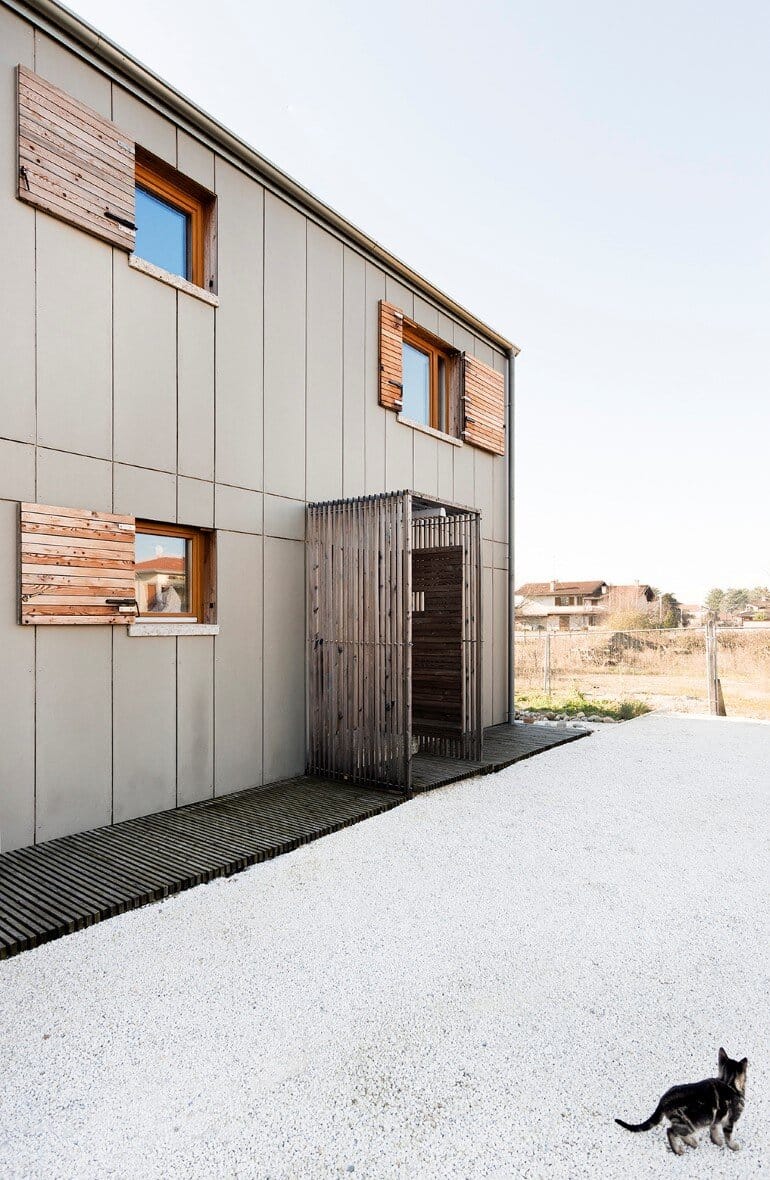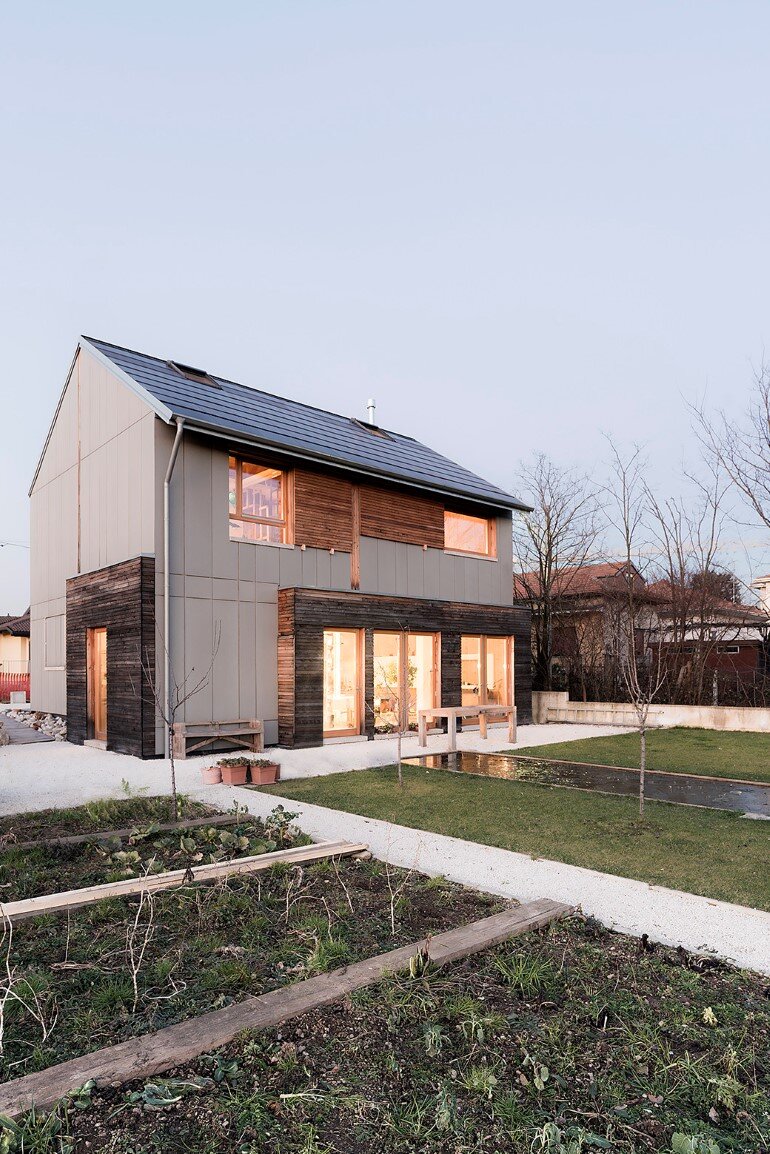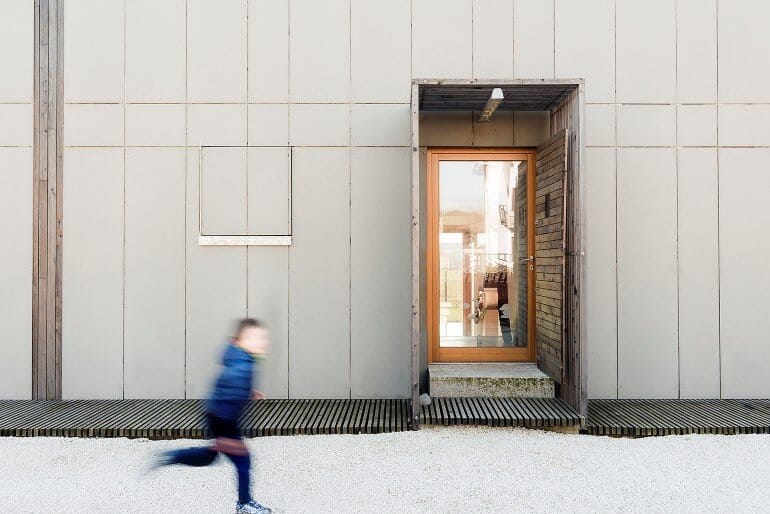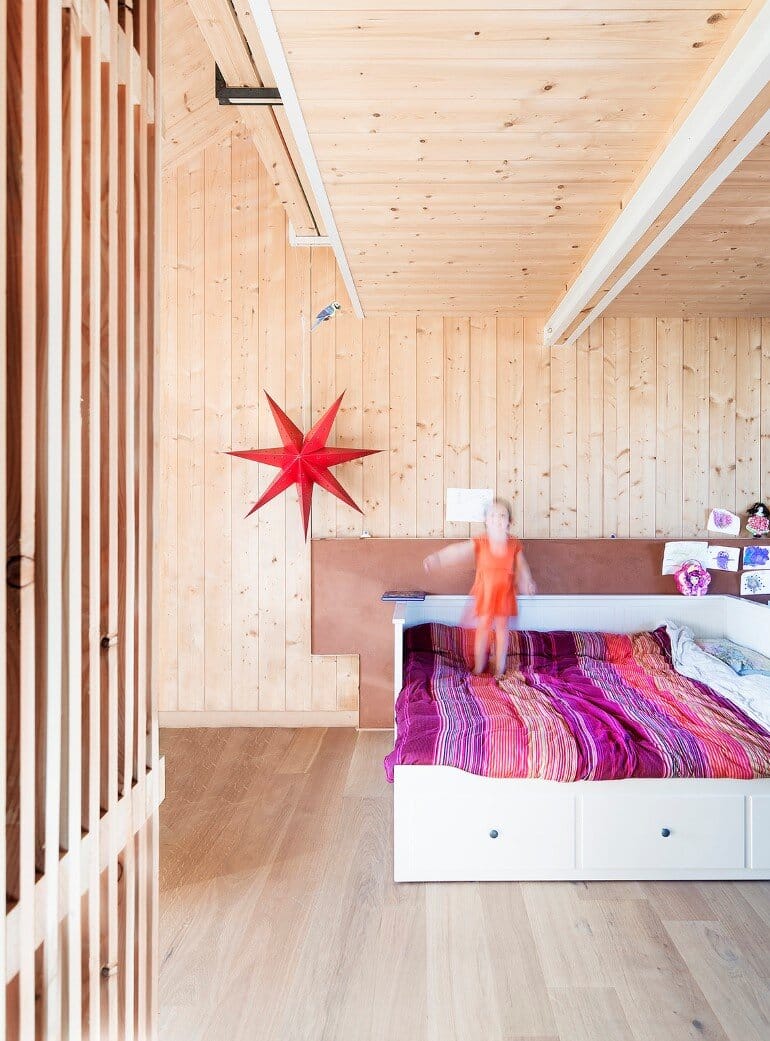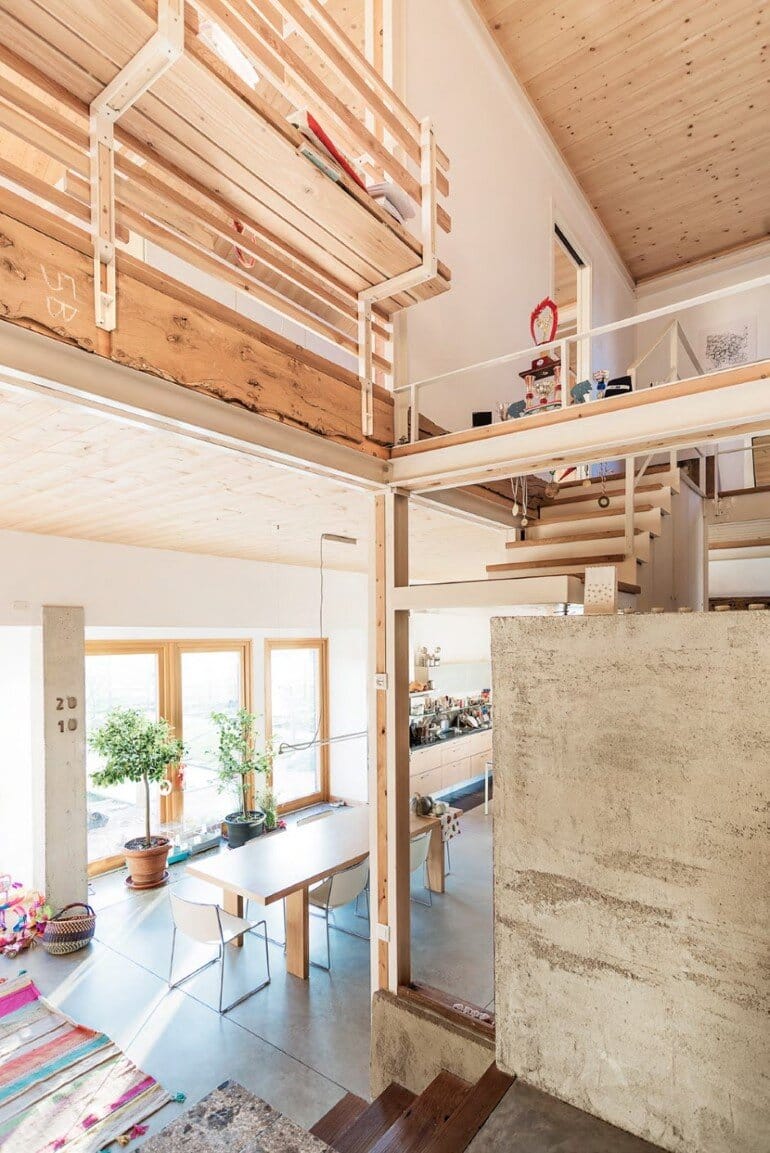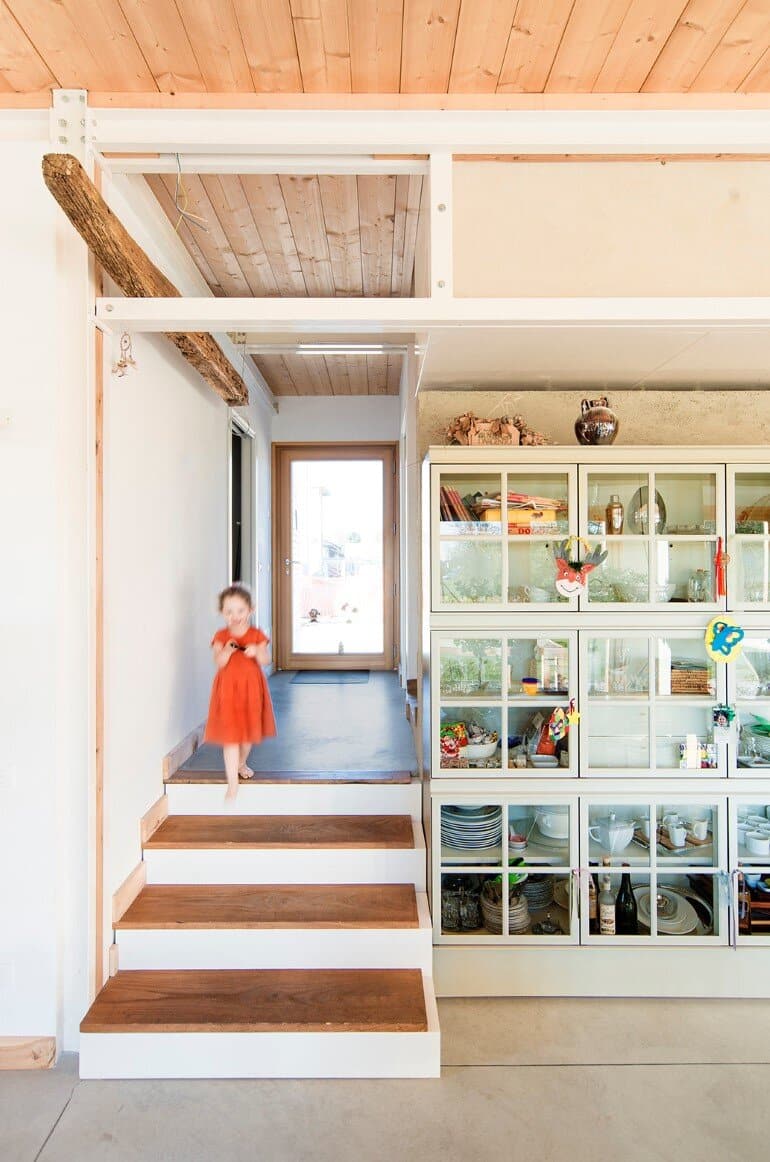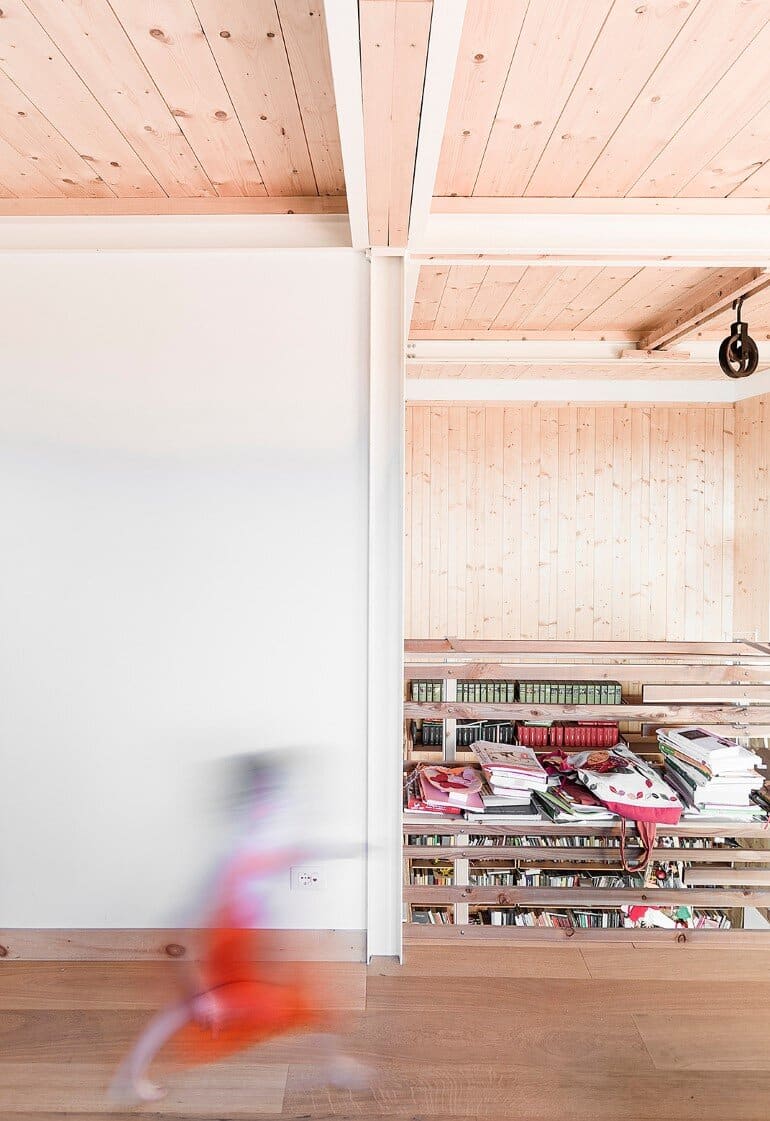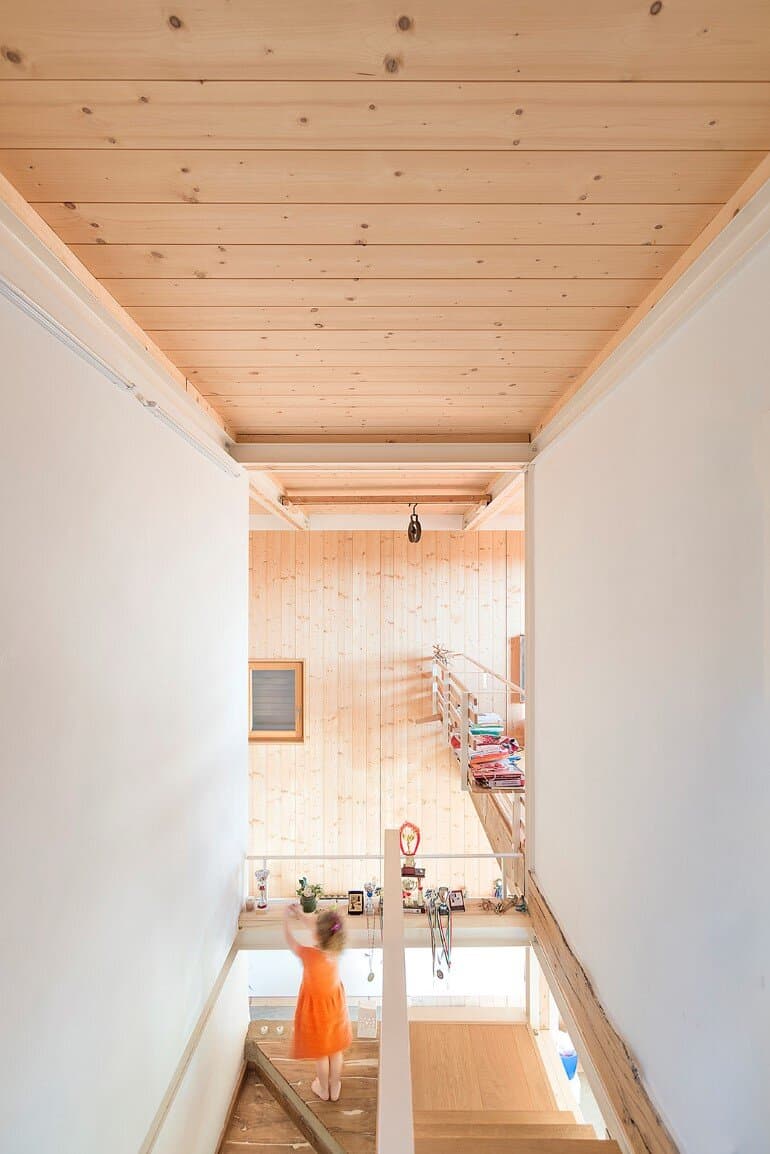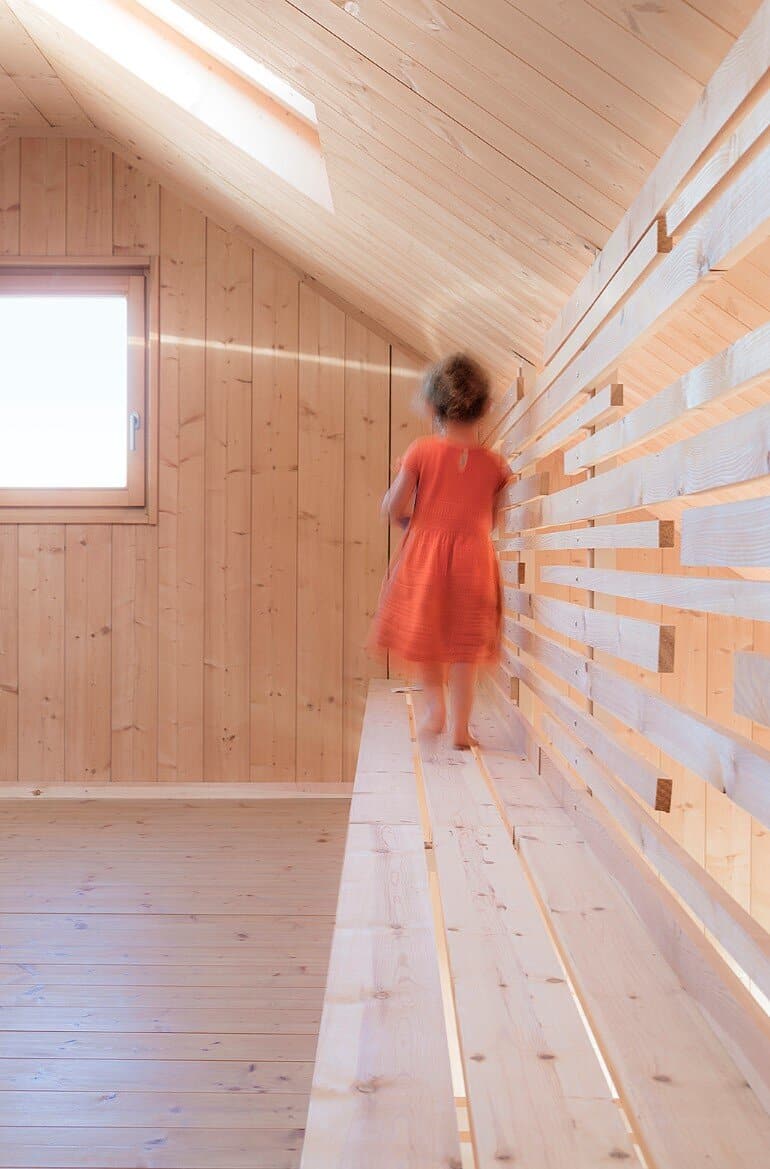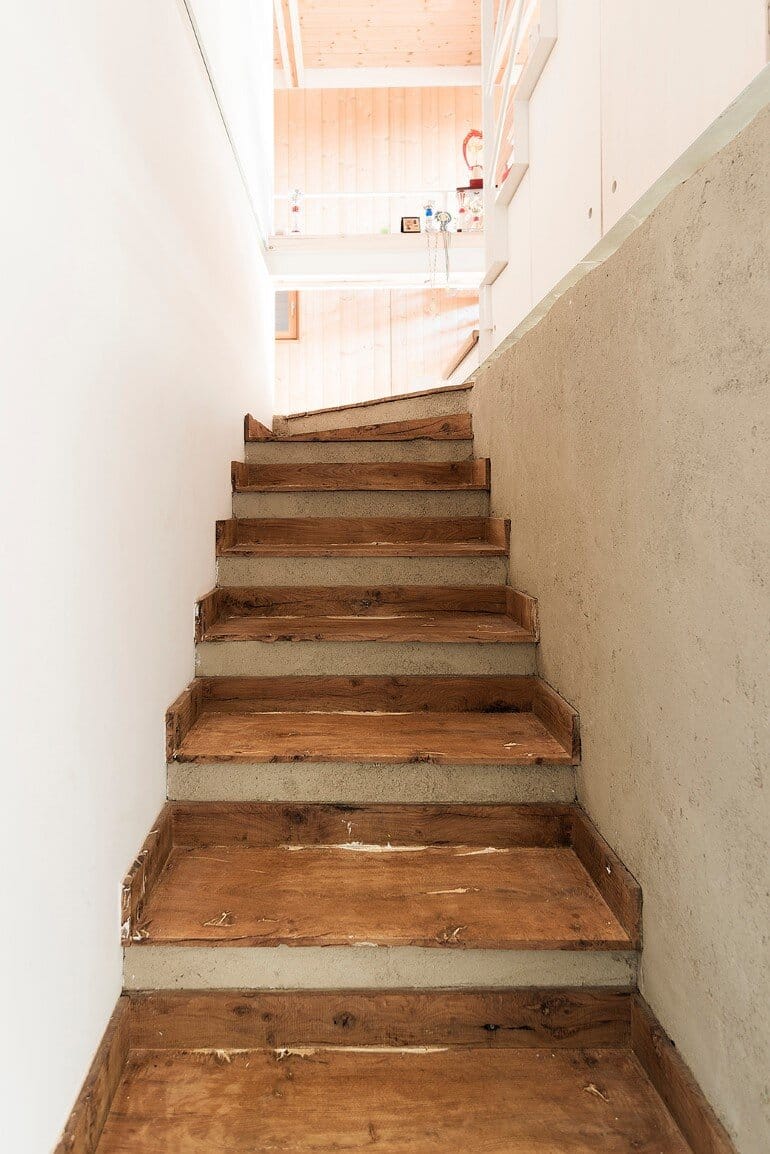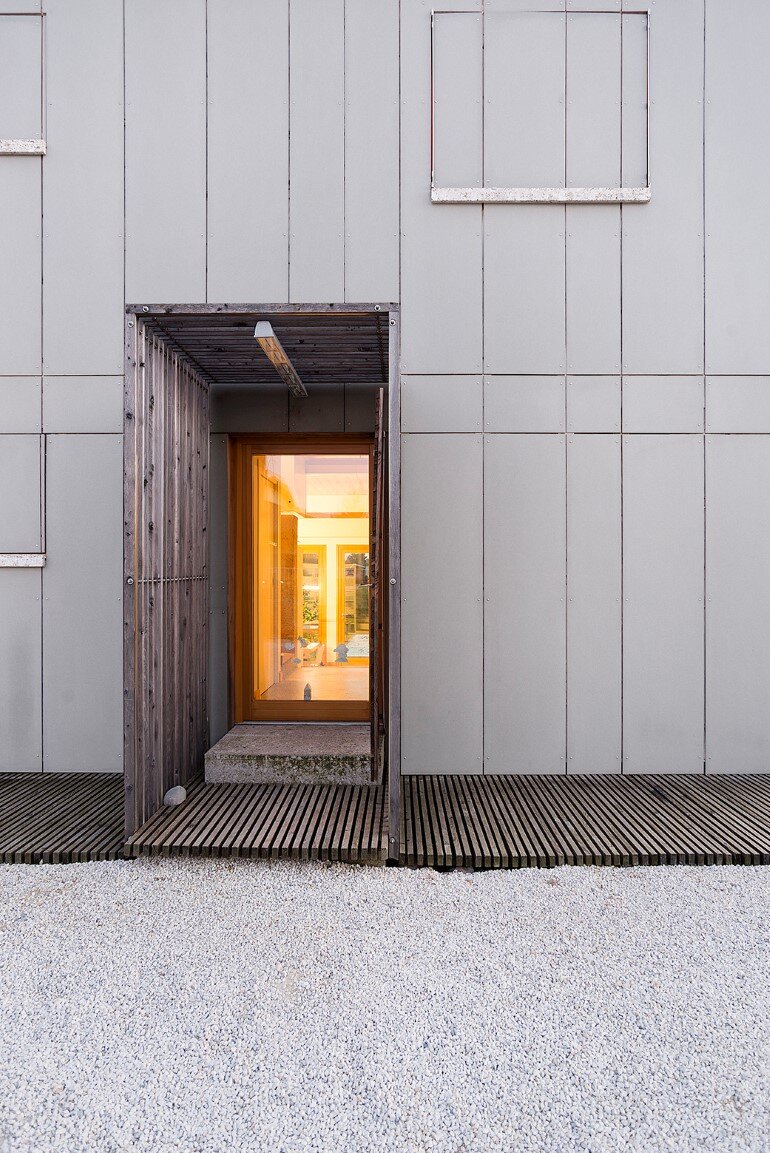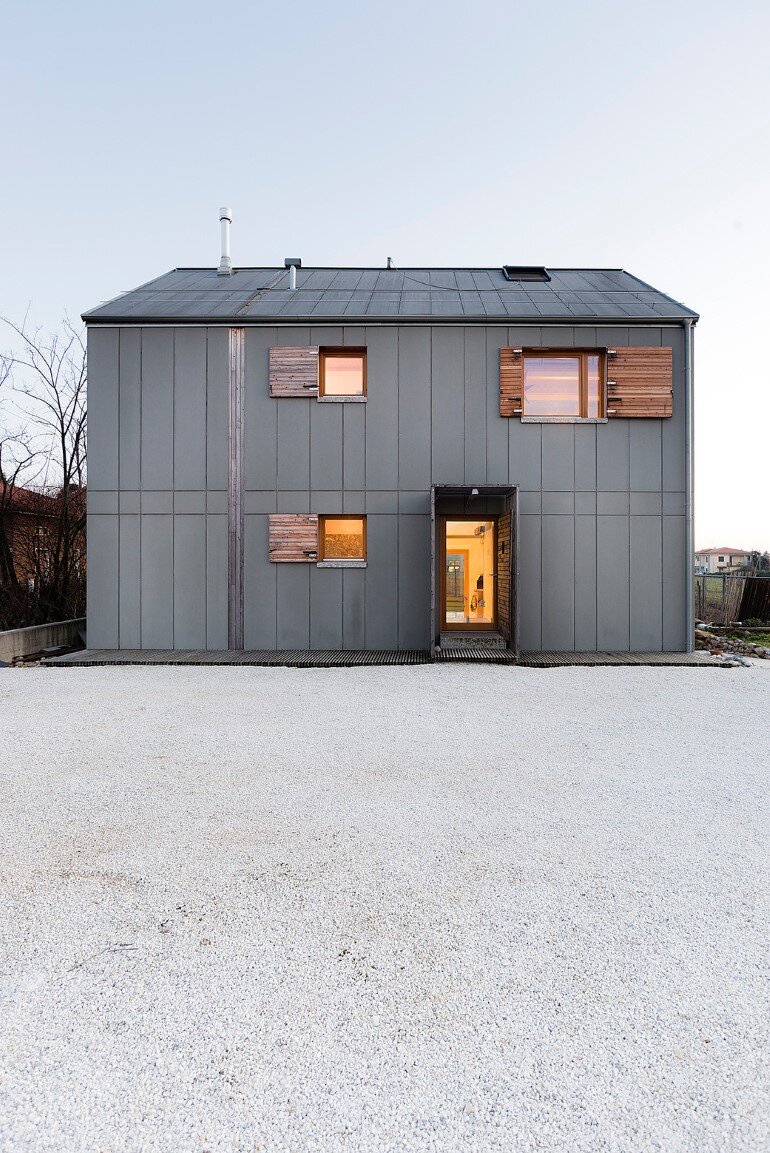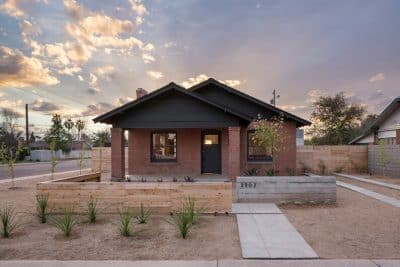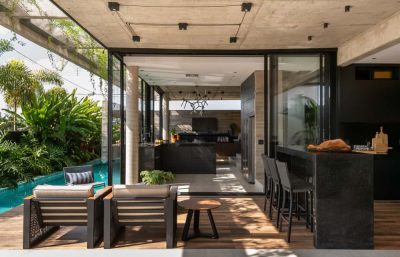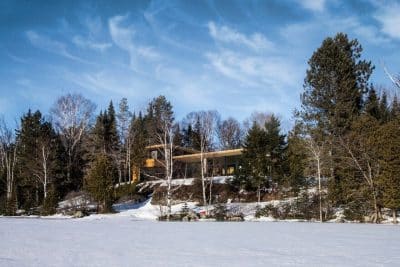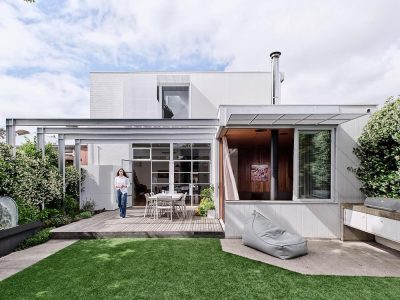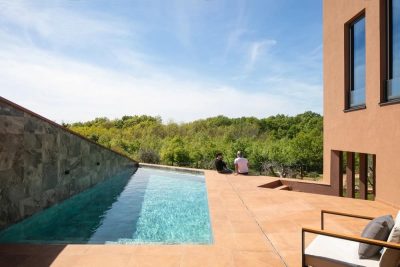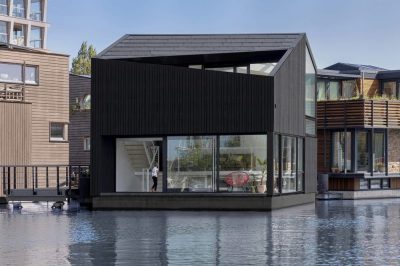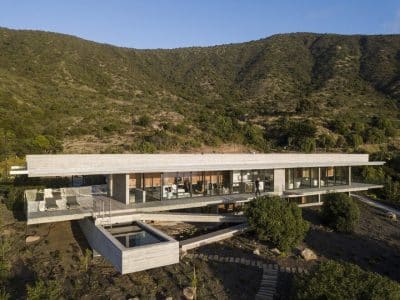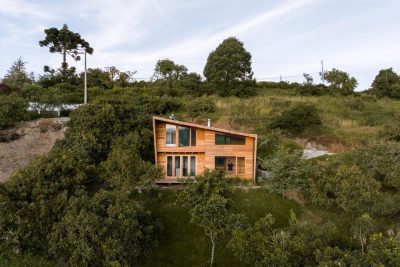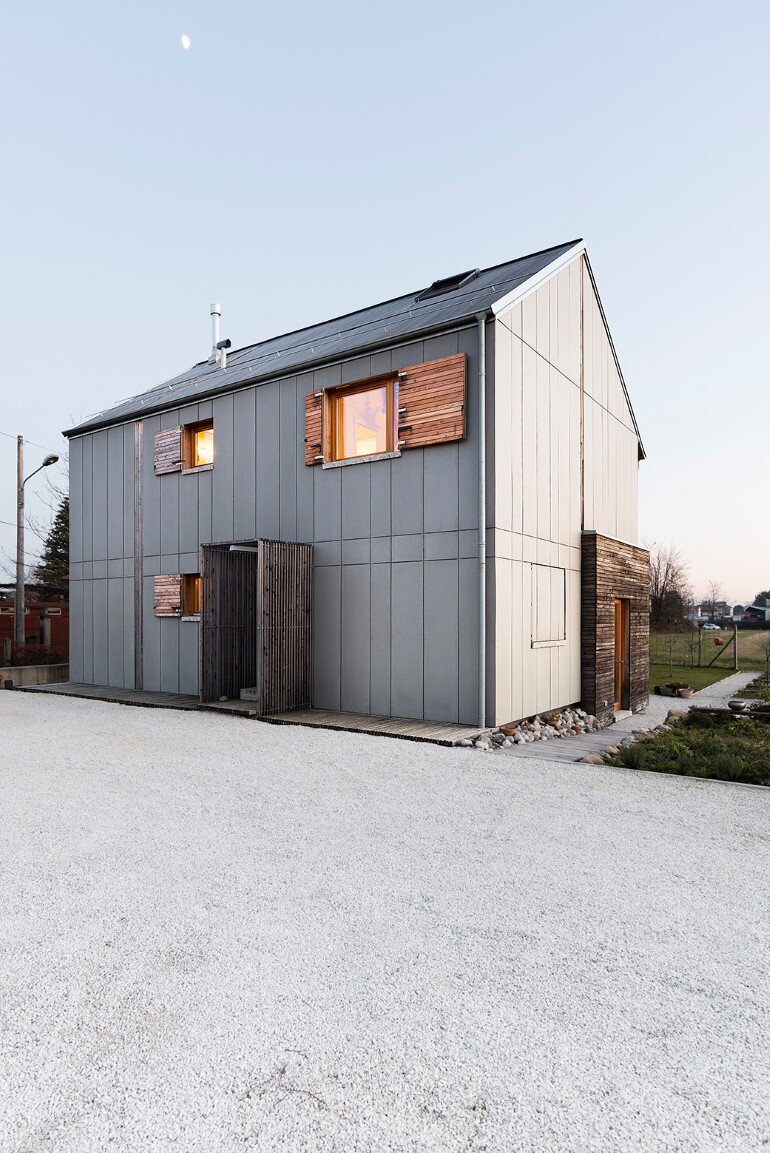
Project: Self-Made House
Architects: Paolo Carlesso
Location: Via Gorizia, 77, 21054 Fagnano Olona VA, Italy
Area 290.0 sqm
Photographs: Simone Bossi
The Self-Made House by Paolo Carlesso in Fagnano Olona, Italy, stands as a testament to sustainable living and self-sufficiency. This unique project emphasizes the importance of time and the process of gradual construction, echoing the slow maturation of nature and the everyday magic of life.
Design Philosophy
The house’s design presented an opportunity to approach construction in a radical and anti-cyclical manner. Most of the construction was self-made, with the exceptions being the foundations and the installation of the perimeter walls. Therefore, the guiding principles were the use of sustainable, economical materials and techniques requiring minimal labor.
Construction and Materials
The walls of the house consist of interlocking timber panels assembled without glues. Additionally, the internal structure is supported by a steel frame, while the exterior features a ventilated facade made of ecological fiber cement. These choices reflect a commitment to sustainability and economic efficiency.
Historical and Cultural Context
The design also embraces the history of the location, countering contemporary urban expansion. Consequently, the orientation and placement of the house are inspired by rural architecture. The building typology and finishing materials draw from the early industrial expansion era. Moreover, the organization of the lot, material economy, and decision to self-construct align with the re-colonization period of the mid-1900s, driven by immigrants.
Financial Independence
Importantly, the project was entirely self-funded, avoiding reliance on banks. This financial independence underscores the commitment to sustainability and self-sufficiency.
Literary Inspirations
Inspiration for the project was drawn from Hyperborean literature and other modern works, which emphasize the acceptance of imperfection, the fight against stagnation, and the celebration of nature and craftsmanship. For example, books like “Juoksuhaudantie” by Kari Hotakainen and “The Man Who Planted Trees” by Jean Giono were influential in shaping the philosophy behind the house.
Conclusion
In summary, the Self-Made House by Paolo Carlesso is more than a dwelling; it is a reflection of a philosophy that values sustainability, historical context, and the beauty of gradual growth. By embracing self-construction and financial independence, the project stands as a model of thoughtful, responsible living.
